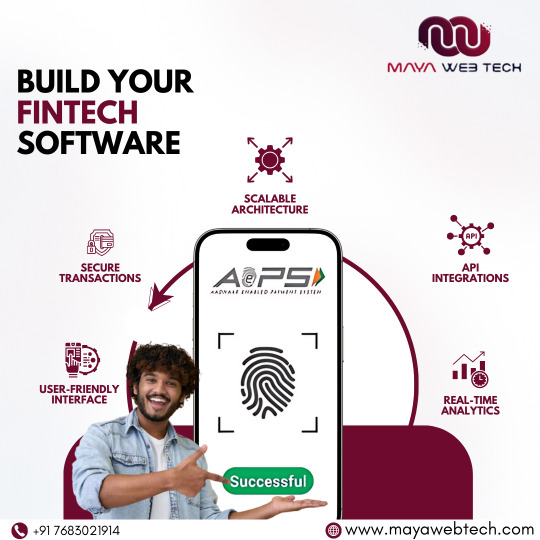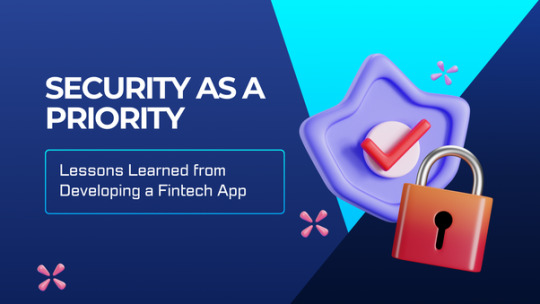#FintechDevelopment
Explore tagged Tumblr posts
Text
#fintech#fintechsoftware#fintechdevelopment#digitalsolutions#digitalbanking#india#usa#us#uk#fintechsoftwaredevelopmentcompany
0 notes
Text

🌟 Revolutionize Digital Gold Investment with @amigoways! 🌟
Looking to develop a secure, user-friendly, and feature-rich digital gold investment app? Amigoways Technologies specializes in cutting-edge Digital Gold App Development to help businesses create seamless and secure platforms for modern investors.
✨ Why Choose Amigoways for Your Digital Gold App? ✅ Secure & Scalable Fintech Solutions ✅ Real-Time Gold Price Integration ✅ Easy Transactions & Wallet Management ✅ Customizable Features for Your Business Needs
🚀 Build a next-gen Digital Gold Investment App and redefine the gold trading experience!
📲 Get a Free Consultation Now 👉 https://www.amigoways.com/mobile-development/
#DigitalGoldApp#GoldInvestmentApp#FintechDevelopment#GoldTrading#Amigoways#AppDevelopment#InvestSmart
0 notes
Text
Prime Fintech Software Development Companies In Florida for 2025
Today, Florida is becoming one of the leading states for fintech companies. These companies offer excellent solutions to reshape financial services. Such companies are aiming to develop more consistent and effective applications to meet the demands of emerging fintech innovations. in this article you can discover, Top 7 Fintech Software Development Companies In Florida for 2025.
0 notes
Text
Cost Breakdown: Custom Software Development for Fintech Solutions
Fintech software development is pivotal in modern finance, driving innovation from mobile payments to online banking. However, navigating the costs can be daunting. In this blog, we delve into the intricacies of custom software development for fintech solutions. Learn about key factors influencing costs, benefits of investment, and a detailed breakdown across development phases. Whether you're a CEO, CTO, or startup founder, this guide equips you to plan and budget effectively for your fintech project, ensuring it meets regulatory standards and delivers seamless user experiences.
#FintechSoftwareDevelopment#CustomSoftwareDevelopment#FintechSolutions#FintechCosts#FintechDevelopment#FinancialTechnology#SoftwareDevelopmentCosts#RegulatoryCompliance#UserExperienceDesign#BusinessBudgeting
0 notes
Text
A Beginner’s Guide to Fintech Services
Fintech services, encompassing financial technology, have revolutionised traditional banking practices by enhancing convenience, affordability, security, and accessibility through digital solutions. Advancements in disruptive technologies like artificial intelligence, blockchain, and alternative lending are reshaping financial services, allowing firms to innovate, streamline processes, and improve customer experience. And therefore, there is enormous scope in Fintech app development.

If you are in the Fintech services business, take note that the global fintech industry looks set to expand at a compound annual growth rate (CAGR) approaching 20% within the next few years, reaching an estimated market valuation of approximately USD$305 billion by the year 2025, according to recent projections reported by GlobeNewswire.
This remarkable projection underlines the increasing adoption of disruptive technologies, changing consumer preferences and shifting paradigms in the financial sector. As leading players continue to innovate and adapt to dynamic market conditions, the future seems bright for those who embrace digital transformation in financial services. Now is the time to collaborate with a fintech app development company and grow in the business of fintech services.
What is Fintech? What is Included in Fintech Services?
Fintech, short for Financial Technology, refers to the intersection of the financial services industry and modern technology. It involves leveraging digital tools, software applications, mobile devices, and web interfaces to deliver financial products and services that brick-and-mortar banks or other financial institutions traditionally offer.
Read more in details: A Beginner’s Guide to Fintech Services
0 notes
Text
#Laravel#FintechMicroservices#LaravelAgility#LaravelMicroservices#LaravelDevelopers#PHP#SoftwareDevelopers#FintechDevelopers#SoftwareSolutions#PHPframework#LaravelProjects#TechnologyTrends#InnovationInTech#LaravelTrends#TechEnthusiasts#IndustryTrends#microservices#WebsiteDevelopment#applications#microservicesarchitecture#framework#Laravelframework#Laravelexpert#developer#laraveldevelopment#laraveldevelopmentcompany#hirelaraveldevelopers#laraveloutsourcing
0 notes
Text

Fintech Software Development—Powering Digital Finance! Transform your business with cutting-edge Fintech software solutions by SevenUnique Tech Solution. Secure, scalable, and feature-rich platforms for banking, payments, and financial services.
📞Call: 9119101723 📨[email protected] . . .
FintechDevelopment #DigitalFinance #SecureTransactions #BankingSoftware #FinanceTech #PaymentSolutions #SevenUniqueTechSolution #SmartBanking #InnovativeTech #SecurePayments #DigitalBanking #India #Jaipur #FinancialGrowth #MoneyTech #TechForFinance #SmartFinance #PaymentInnovation #ScalableFintech #FinanceAutomation
0 notes
Text

🚀 Build Your Fintech Software with Maya Web Tech! Looking to create a secure, scalable, and user-friendly fintech solution? We've got you covered with: ✅ Secure Transactions ✅ Scalable Architecture ✅ Real-Time Analytics ✅ API Integrations ✅ User-Friendly Interface
Our expertise ensures your software is future-ready and packed with innovation! 📲 Contact us today at +91 7683021914 or visit www.mayawebtech.com to get started.
#FintechDevelopment #SoftwareSolutions #MayaWebTech #SecureTransactions #RealTimeAnalytics #APIIntegration #ScalableSoftware #UserFriendlyInterface #TechInnovation #AePS #FintechSoftware
0 notes
Photo

Here are the latest Fintech trends vital to stand out in the competitive Fintech industry. Fintech is booming at an unprecedented pace, with digital innovation being one of the main reasons. Mobio Solutions' skilled team of expert fintech developers who can develop niche solutions for your Fintech requirements.
0 notes
Link
Description:The FinTech sector has experienced immense development in the implementation of complete digital financial products and services. Here is a list of the top five technologies that will revolutionize the industry, To Read more visit: https://bit.ly/3pzRX0o
#Financialtechnology#Fintechtechnology#financialservices#Fintechtechnologyinbanking#Fintechdevelopment#FintechcompaniesinUS#DevelopmentcompanyinUS#Reingorceglobal
0 notes
Photo

Fintech app development is one of the most sought after IT skills in the industry. With the recent boom of fintech app companies, finding qualified developers has been more important. Here we list of key skills for fintech developers that need to be successful in this field.
0 notes
Text
Lessons Learned from Developing a Fintech App with Security as a Priority

Developing a fintech app is no small feat. When dealing with sensitive financial data, security becomes more than just a requirement—it’s the cornerstone of the entire project. With the rise in cybercrime and the growing dependence on digital financial platforms, ensuring that security is at the forefront of the development process is crucial. Below are the key lessons learned from building a fintech app where security was prioritized at every step.
1. Security-First Mindset from the Beginning
One of the most critical lessons is the importance of adopting a security-first approach from day one. Security cannot be an afterthought or added on as a layer once the app is completed. It must be embedded into the entire development process—from the initial architecture design to post-launch updates.
A proactive strategy involved:
Threat modeling: Identifying potential threats and attack vectors early on.
Secure coding practices: Training the development team on writing secure code, following OWASP guidelines, and preventing common vulnerabilities like SQL injection, cross-site scripting (XSS), and cross-site request forgery (CSRF).
Building with encryption in mind: Ensuring all sensitive data is encrypted, both in transit and at rest.
2. Compliance and Regulatory Standards Aren’t Optional
Fintech apps operate in a highly regulated space. Meeting compliance standards such as GDPR, PCI DSS (Payment Card Industry Data Security Standard), and local financial regulations is mandatory. During development, the focus wasn’t just on meeting these requirements but exceeding them to future-proof the app against evolving regulations.
Key compliance takeaways:
Data privacy by design: Collect only the necessary data and ensure its encryption.
Regular audits and security assessments: Working with third-party security firms for penetration testing and vulnerability assessments.
User consent and transparency: Clear, user-friendly privacy policies that inform users about data collection and usage.
3. Two-Factor Authentication (2FA) is Non-Negotiable
Ensuring robust authentication mechanisms was a key aspect of the app’s security framework. Implementing two-factor authentication (2FA) significantly reduces the likelihood of unauthorized access to user accounts.
Lessons learned:
SMS-based 2FA isn’t foolproof: While SMS 2FA is better than none, it is susceptible to SIM-swapping attacks. Instead, app-based authenticators (like Google Authenticator) or hardware tokens provide stronger security.
Biometric authentication: Incorporating fingerprint or facial recognition for an extra layer of security without compromising user convenience.
4. Encryption is Essential Everywhere
Encryption played a pivotal role in protecting data both in transit and at rest. This included:
End-to-end encryption (E2EE) for communication between users and the app.
Tokenization: Replacing sensitive data like credit card numbers with tokens that have no exploitable value if compromised.
TLS (Transport Layer Security) to secure data in transit.
The lesson here is to ensure that encryption is applied wherever sensitive data is stored, processed, or transmitted.
5. User Education is Part of Security
Even the most secure fintech app can be compromised if users don’t understand basic security practices. Educating users on security best practices—like avoiding phishing scams, choosing strong passwords, and recognizing suspicious activity—goes a long way in preventing security breaches.
We learned that providing:
In-app alerts for unusual login attempts or transactions.
User training materials on security awareness.
Clear guidance on managing security settings and 2FA setup.
This not only protects the user but enhances their trust in the app.
6. Continuous Monitoring and Real-Time Alerts
After launching the app, continuous security monitoring became crucial to identifying and mitigating threats in real time. Setting up real-time alerts for suspicious activity helped prevent potential breaches before they escalated.
Lessons learned:
Automated monitoring systems: Tools like security information and event management (SIEM) systems help track unusual patterns of behavior.
Anomaly detection: Implementing machine learning algorithms to detect anomalies in transaction patterns, potential fraud attempts, and data breaches.
Incident response plan: Having a well-documented incident response plan in place to act swiftly if a breach does occur.
7. Secure API Integration
Fintech apps often rely on external APIs to provide additional functionality, such as payment processing, banking services, or KYC (Know Your Customer) verification. However, these third-party integrations can introduce vulnerabilities if not managed securely.
The key takeaways for API security:
Use of API gateways to control access and ensure secure communication between services.
Rate limiting to prevent denial of service (DoS) attacks.
Secure API authentication using OAuth 2.0 or OpenID Connect to ensure only authorized entities can access sensitive data.
8. Regular Security Audits and Penetration Testing
Security isn’t a one-time task; it requires ongoing effort. Regular penetration testing and security audits by internal teams or external security professionals were critical to uncovering vulnerabilities that could be exploited by attackers.
Lessons learned:
Routine security assessments to ensure the app remains compliant with the latest security standards.
Bug bounty programs: Incentivizing security researchers to find and report vulnerabilities before malicious actors do.
9. Handling Sensitive Data Minimally and Securely
Another important lesson was adopting a minimal data collection policy. By collecting only the necessary data, the attack surface is reduced, and regulatory compliance becomes more manageable.
Tokenization and pseudonymization of sensitive data, such as payment details, helped reduce the risk of exposure in the event of a breach.
Secure backup and disaster recovery protocols ensured that if a breach or data loss occurred, the app could recover swiftly without compromising data integrity.
10. User-Centric Security
Security needs to be robust, but not at the cost of user experience. Balancing user-friendly interfaces with strong security features was a critical part of the development process.
Seamless security processes: Ensuring that security steps, such as 2FA and password updates, were intuitive and not cumbersome for users.
Consistent updates: Providing regular app updates to address security vulnerabilities, while ensuring a smooth user experience.
Outcome
Developing a fintech app with security as a priority requires a deep understanding of the threats facing the financial sector and a commitment to implementing best practices throughout the app’s lifecycle. The key takeaway from our experience is that security needs to be ingrained in every aspect of development, from design to deployment, and continuously monitored post-launch.
#FintechDevelopment#AppSecurity#Cybersecurity#SecureAppDevelopment#FintechApp#DataProtection#LessonsLearned#MobileSecurity#TechBestPractices
0 notes